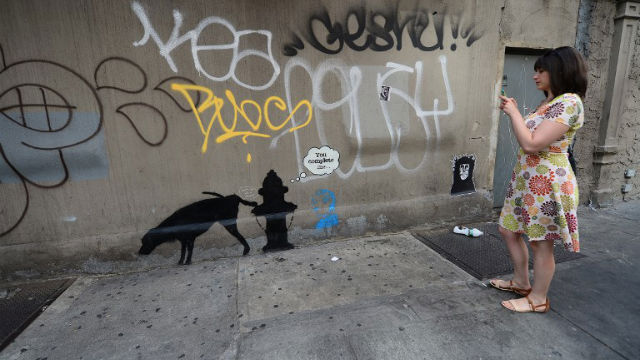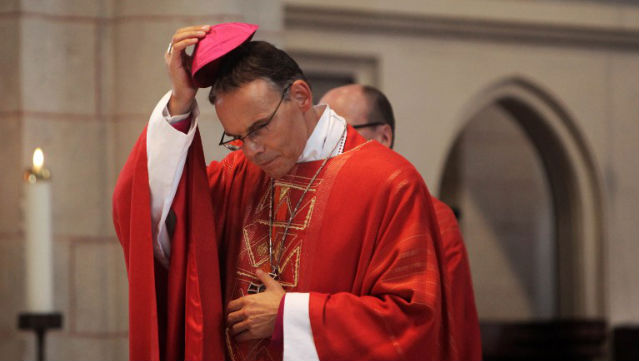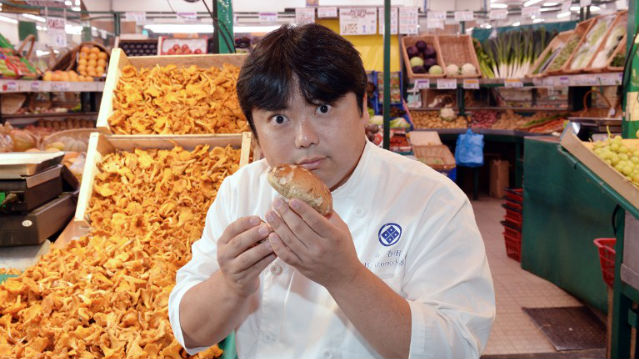SUMMARY
This is AI generated summarization, which may have errors. For context, always refer to the full article.
MANILA, Philippines – Here are some Life and Style stories you might have missed during the week.
Champagne’s Bouzy secret

If ever there was a place destined to produce a cheeky tipple, it has to be the village of Bouzy in the champagne country of northern France.
Yes, it really is pronounced “boozy” and that is not the only thing that stands out about this charming little corner of the wine world.
All around stretch vineyards that produce the grapes to make the world’s most prestigious sparkling wine. For as far as the eye can see, bubbles are the business, and a lucrative one at that.
Bouzy however has another string to its bow, thanks to a group of dedicated producers who have opted to maintain, albeit largely as a sideline, a centuries old tradition of producing still red wine from pinot noir vines planted close to the northern limit of where the notoriously fickle varietal will ripen fully.
“We are like the little Gaulois village in the Asterix stories,” said local vigneron (winemaker) Jean-Rene Brice.
“Instead of holding out against the Romans, we are holding out for red wine production whilst all around everyone is making champagne.”
Brice’s family property has eight hectares of vines situated above the village on land that is eligible to provide red grapes for the production of the very best, Grand Cru champagnes, most of which are assembled from a mixture of black grapes — pinot noir and pinot meunier — and chardonnay white grapes.
Security tight after Bansky graffiti woes

Guards were on close watch Saturday as British street artist Banksy brought his in-your-face creations to New York City, where some unhappy property owners defaced his work.
The Briton, whose identity is a secret, has sent hipsters and art fans scrambling to get a peek at his “Better Out Than In” month-long residency in New York.
He has received offers of big money for some of his creations. But most of the works have so enraged property owners that they have been rapidly defaced.
“Graffiti does ruin people’s property, and it’s a sign of decay and loss of control,” Mayor Michael Bloomberg said this week. “Some places are for arts, and some aren’t.”
In Williamsburg, Brooklyn, the owner of a building Banksy painted on — showing two geishas on a bridge — was tagged and now has guards standing watch due to large crowds and several incidents.
The artist’s take on the twin towers of the World Trade Center brought down on Sept 11, 2001 — painted in Brooklyn Heights, was removed after less than a week on view. Authorities did not immediately say why.
Banksy reportedly has sold his works for anywhere from US$30 to $1.87 million.
Banksy’s stenciled designs, known for their irreverent humor and political activism, have propelled him from a graffiti rebel to reluctant star.
He has spoken out against the exorbitant sums paid for his art and invites people to download photographs of his work for free from his website.
Emir of Qatar’s sister named biggest player in art world

Sheikha Al-Mayassa bint Hamad bint al-Thani has around $1 billion a year to spend on art as head of the Qatar Museums Authority (QMA), according to ArtReview — 30 times more than New York’s Museum of Modern Art.
“No wonder, then, that whenever Sheikha Al-Mayassa is in town, everyone from government ministers to mayors queue up to pay their respects,” the magazine said as it published its annual “Power 100” ranking.
China’s Ai Weiwei, who topped the list last year, is the highest-ranked artist for 2013, coming in 9th place.
But Sheikha Al-Mayassa, who climbed the list after coming in 11th place last year, came first because of her “sheer buying power,” ArtReview said.
The QMA bought French post-impressionist Paul Cezanne’s masterpiece “The Card Players” for $250 million last year, making it the most expensive painting sold to date.
“If and when Doha finds it has bought enough art, there’s going to be a hole in the market that no one else can fill,” ArtReview said.
The wealthy Gulf state, which has just 1.5 million inhabitants, is trying to establish itself as the region’s cultural hub.
It runs several museums and galleries in Qatar including the Museum of Islamic Art, the largest of its kind in the region.
German-born art dealer David Zwirner, who owns galleries in New York, came in second place in ArtReview’s 2013 ranking while Swiss dealer Iwan Wirth came third.
Relief, scorn in Germany over time-out for ‘bling shop’

German Catholics, clergy and the media reacted with a mix of relief, reform calls and ridicule to the Vatican’s suspension of the big-spending “bling bishop,” Franz-Peter Tebartz-van Elst.
Pope Francis ordered a time-out for the bishop over his luxury lifestyle and multi-million-euro house renovations, despite multiple calls in Germany for the prelate to be dismissed.
News portal Spiegel Online, whose parent magazine has long tussled with the cleric, headlined its article with the words “The Lord taketh away,” while the top-selling Bild daily declared “Limburg doesn’t want the splurge-bishop back.”
The reformist Catholic group “Wir sind Kirche” (We are Church) said that “after the immense loss of trust caused by the behavior” of the bishop it was “inconceivable” that he would again hold episcopal office.
The group also urged reforms in the selection process of bishops and the auditing of their finances and said that “the Limburg case must serve as a serious warning to all German bishops concerning their actions, management and lifestyle.“
The Central Committee of German Catholics, which groups lay associations in the country, said it was satisfied with the Vatican decision, saying it “offers a chance at a new beginning in the diocese of Limburg.”
Japanese chef brings taste of Fukushima to France

Arriving in France with a suitcase full of smoked chicken and wasabi from the stricken Japanese region of Fukushima, chef Harutomo Hagi was a man on a mission.
Armed with a sheaf of test certificates vouching for the safety of the produce following the March 2011 nuclear disaster there, the 37-year-old was in Paris to show the world what Fukushima has to offer.
“Even when they smiled the farmers were sad,” he told Agence France-Presse, explaining that products from the affected area had become tainted in the eyes of consumers and now sold at half the price they did before the accident.
The situation was so bad, he said, that he thought “it was all over.”
Large swathes of the area were evacuated after the earthquake and tsunami two years ago that triggered the emergency at the Fukushima Daiichi nuclear power station.
The plant’s reactors went into meltdown and spread radiation over a wide area.
For months afterwards, Hagi’s own restaurant in the city of Iwaki, around 30 kilometers (18 miles) from Fukushima Daiichi, was deserted as people feared that everything in the region had been contaminated.
Many fled this key agricultural area, which now has the highest proportion of fallow land in Japan.
But Hagi opted not to join the exodus.
On the contrary, he decided that not only would he stay but he would cook with products exclusively from the region.
The publicity generated by his initiative turned around the fortunes of his own restaurant, and now the chef is determined to do what he can to help others revive their livelihoods too.
And so, over the past month, the chef found himself in the kitchens of the presidential Elysee Palace in Paris and the royal residence of Prince Albert in Monaco.
Invited to Europe by the Club des Chefs des Chefs — whose elite membership is made up of the current personal chefs of heads of state — Hagi spent two weeks at the Elysee followed by a stint in Monaco.
He met both President Francois Hollande and Prince Albert, in their cases serving up Japanese menus using European produce.
In Paris, he also cooked with chef Thierry Marx at Sur Mesure, his restaurant at the Mandarin Oriental Hotel which holds two Michelin stars.
The chef speaks with pride of Fukushima “baby peaches, tiny and sweet” and the smoked chicken from the region that he brought with him.
“I was very moved to come to France with this chicken,” he said, adding that Paris is important as one of the gastronomic capitals of the world. – with reports from Agence France-Presse/Rappler.com
Add a comment
How does this make you feel?
There are no comments yet. Add your comment to start the conversation.